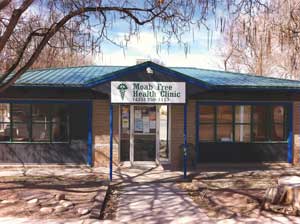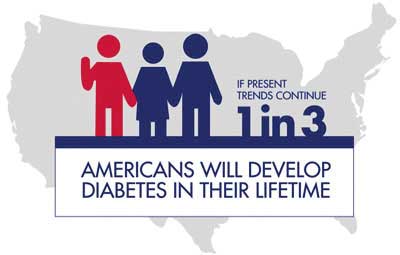HEALTHY HAPPENINGS February 2014 |
|
Our approach to health at Grand County Wellness Center is simple: Give the body what it needs, remove what doesn’t belong there, and employ tools—both ancient and modern—to help the body repair itself. The body needs nutrients, water, sleep, sunlight, nurturing relationships, meaningful work, and so forth. Oftentimes supplementation is required in the form of specific vitamins, minerals, amino acids, fatty acids, and hormones. At the same time, health is impaired in many ways by toxins of all kinds, including drugs, pesticides, heavy metals, organic pollutants, etc. Providing what the body was designed to utilize and minimizing those things that impair proper function can go a long way toward promoting health. However, healing can be further facilitated and accelerated by the use of specific tools. Some of the tools we utilize in the Wellness Center include clinically-proven herbs, biofeedback, IV nutrition, ozone therapy, and pulsed electromagnetic therapy. The three-pronged approach described here works as well for diabetes as for everything else we treat.
|
|
Get Covered Moab - Health Insurance Information |
|
Do I Have to Get Health Insurance? Yep. U.S. citizens and legal residents must be covered by an insurance plan providing “Minimum Essential Coverage” by March 31st, 2014 or be liable for a $95 per person tax penalty (or 1% of their income, whichever is greater). You can get an exemption from this requirement for financial hardship, or if you are Native American, in jail, an undocumented immigrant, living out of the country, profess religious objections, or if the least expensive insurance plan exceeds 8% of your income. What’s “Minimum Essential Coverage?” All health insurance plans on the Health Marketplace must offer ten benefits that constitute “minimum essential coverage”: hospitalization, outpatient care, prescription drugs, emergency care, mental health services, rehabilitative care, pediatric and maternity care, lab work, and free preventative services -- the whole shebang. What’s the Health Insurance Marketplace? This is a digital marketplace (www.healthcare.gov) where private insurance companies offer standardized health care plans from which individuals may purchase health insurance eligible for federal subsidies. On the marketplace, you’ll find 37 different insurance plans for Grand County residents. How Do I Tell These Plans Apart? Health insurance plans come in Bronze, Silver and Gold categories (think Olympic medals). Bronze plans offer the least expensive premiums (the price you pay each month for insurance) coupled with the highest deductibles (what you pay upfront before your insurance kicks in). These Bronze plans cover roughly 60 percent of your medical costs until you hit your out-of-pocket max (capped at $6,350 per person). Silver plans have lower deductibles but higher premiums, and provide 70 percent of your medical benefit costs. Gold plans have the lowest deductibles but the highest premiums, and will cover 80 percent of your medical expenses. What’s It Going to Cost Me? Depends on what you earn in relation to the Federal Poverty Level (currently $11,490 for an individual, $23,550 for a family of four). If your income falls under 400 percent of the FPL, you will receive a sliding-scale subsidy, which can drop the price of your premium considerably. Some people making less than 150% of the FPL may even qualify for plans with $0 premiums (never mind the $6,000 deductibles). If your income is above 400 percent of the FPL, you can forget about any subsidies. Are There Any Other Cost Reductions? Yep. If you earn less than 250 percent of the Federal Poverty Level, you can have your maximum out-of-pocket spending capped at a lower level — but only if you purchase a Silver Plan. For example, someone making between 150 to 200 percent of the FPL can find plans where $3000 deductibles are lowered to $500, and out-of-pocket maximums reduced from $6,000 to $1,000 (or less). Do I have to Shop on the Health Insurance Marketplace? Nope. You can shop directly with an insurance carrier -- but you won’t qualify for a subsidy or cost-sharing reduction unless you actually purchase your insurance through the Marketplace.  What If My Income Level Changes during the Year? It all comes out in the wash. When filing 2014 taxes, if you report more money than what you estimated at the beginning of the year, you’ll have to pay some of that subsidy back. Conversely, if your income drops, you might qualify for a refundable tax credit. What If My Income Level Changes during the Year? It all comes out in the wash. When filing 2014 taxes, if you report more money than what you estimated at the beginning of the year, you’ll have to pay some of that subsidy back. Conversely, if your income drops, you might qualify for a refundable tax credit.The Moab Regional Hospital and Moab Free Health Clinic are partnering to encourage everyone to explore potential cost-saving options on the Health Insurance Marketplace. Visit the Get Insured Moab campaign at GetInsuredMoab.org for local resources. Call to make an appointment in a health insurance enrollment clinic: Moab Regional Hospital at 719-3520 for Wednesday 9am-3pm clinics or the Moab Free Health Clinic at 259-1113 for Thursday 9am-12pm clinics. These clinics are free and available to everyone. |
 Fortunately, there is reason for hope. Recently I saw one of my patients from Beaver for her routine bio-identical hormone visit. I see her every six months. To my amazement, she had lost 26 pounds since we last met. I walked in the room and asked “What on earth are you doing? You’ve lost 26 pounds!” “I’m only doing what you told me to do,” she replied. She reminded me that I had advised her to make some simple dietary changes and to take a mixture of insulin-sensitizing herbs.
Fortunately, there is reason for hope. Recently I saw one of my patients from Beaver for her routine bio-identical hormone visit. I see her every six months. To my amazement, she had lost 26 pounds since we last met. I walked in the room and asked “What on earth are you doing? You’ve lost 26 pounds!” “I’m only doing what you told me to do,” she replied. She reminded me that I had advised her to make some simple dietary changes and to take a mixture of insulin-sensitizing herbs.